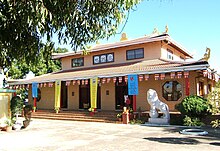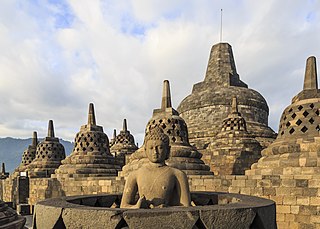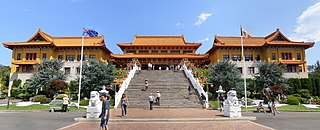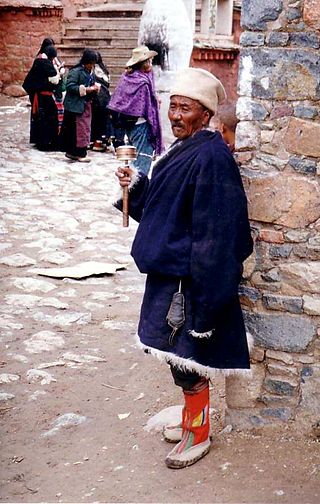
This is a list of Buddhist temples, monasteries, stupas, and pagodas in Australia for which there are Wikipedia articles, sorted by location.

This is a list of Buddhist temples, monasteries, stupas, and pagodas in Australia for which there are Wikipedia articles, sorted by location.




Buddhist religious architecture developed in the Indian subcontinent. Three types of structures are associated with the religious architecture of early Buddhism: monasteries (viharas), places to venerate relics (stupas), and shrines or prayer halls, which later came to be called temples in some places.

Amaravati is a Theravada Buddhist monastery at the eastern end of the Chiltern Hills in South East England. Established in 1984 by Ajahn Sumedho as an extension of Chithurst Buddhist Monastery, the monastery has its roots in the Thai Forest Tradition. It takes inspiration from the teachings of the community's founder, the late Ajahn Chah. Its chief priorities are the training and support of a resident monastic community, and the facilitation for monastic and lay people alike of the practice of the Buddha's teachings.

In Australia, Buddhism is a minority religion. According to the 2016 census, 2.4 percent of the total population of Australia identified as Buddhist. It was also the fastest-growing religion by percentage, having increased its number of adherents by 79 percent between the 1996 and 2001 censuses. The highest percentage of Buddhists in Australia is present in Christmas Island, where Buddhists constitute 18.1% of the total population according to the 2016 Census. Buddhism is the fourth largest religion in the country after Christianity, Islam and Hinduism.

The most important places in Buddhism are located in the Indo-Gangetic Plain of southern Nepal and northern India. This is the area where Gautama Buddha was born, lived, and taught, and the main sites connected to his life are now important places of pilgrimage for both Buddhists and Hindus. Many countries that are or were predominantly Buddhist have shrines and places which can be visited as a pilgrimage.

Kumbum Monastery, also called Ta'er Temple, is a Tibetan gompa in Lusar, Huangzhong County, Xining, Qinghai, China. It was founded in 1583 in a narrow valley close to the village of Lusar in the historical Tibetan region of Amdo. Its superior monastery is Drepung Monastery, immediately to the west of Lhasa. It is ranked in importance as second only to Lhasa.

The Miaoying Temple, also known as the "White Stupa Temple", is a Chinese Buddhist temple on the north side of Fuchengmennei Street in the Xicheng District of Beijing. The temple was a monastery of the Sakya school of Tibetan Buddhism and is now open to the public as a museum. The temple's White Pagoda was built 1279 in the Yuan Dynasty and is the oldest and largest Tibetan Buddhist pagoda in China.
Geshe Acharya Thubten Loden was the spiritual leader of the Tibetan Buddhist Society in Australia. Geshe Loden established the Peaceful Land of Joy Meditation Centre in Yuroke, Victoria, and has written many books. In 2011, he was named Hume Citizen of the Year.